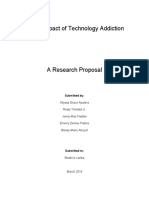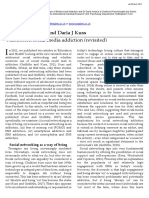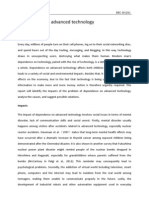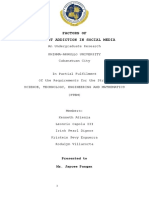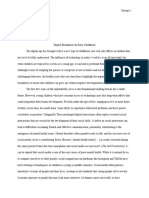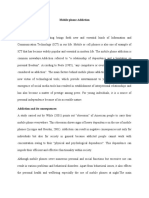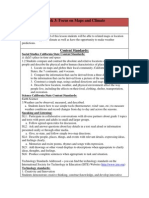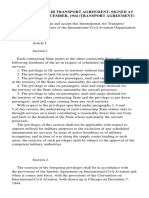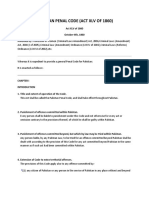0% found this document useful (0 votes)
133 views8 pagesChapter 2 - ABOGADO
The document reviews related literature and studies on addiction to e-gadgets among senior high school students and its relation to their study habits. Several studies found that excessive use of technology can negatively impact academic performance, health, relationships, and social behavior. However, technology also has benefits for education when used appropriately. The theoretical framework focuses on determining levels of addiction to e-gadgets and how it relates to the students' study habits, based on a theory that e-gadgets can be a source of addiction due to their use for entertainment, class preparation, and time savings.
Uploaded by
Shailac RodelasCopyright
© © All Rights Reserved
We take content rights seriously. If you suspect this is your content, claim it here.
Available Formats
Download as DOC, PDF, TXT or read online on Scribd
0% found this document useful (0 votes)
133 views8 pagesChapter 2 - ABOGADO
The document reviews related literature and studies on addiction to e-gadgets among senior high school students and its relation to their study habits. Several studies found that excessive use of technology can negatively impact academic performance, health, relationships, and social behavior. However, technology also has benefits for education when used appropriately. The theoretical framework focuses on determining levels of addiction to e-gadgets and how it relates to the students' study habits, based on a theory that e-gadgets can be a source of addiction due to their use for entertainment, class preparation, and time savings.
Uploaded by
Shailac RodelasCopyright
© © All Rights Reserved
We take content rights seriously. If you suspect this is your content, claim it here.
Available Formats
Download as DOC, PDF, TXT or read online on Scribd
/ 8




